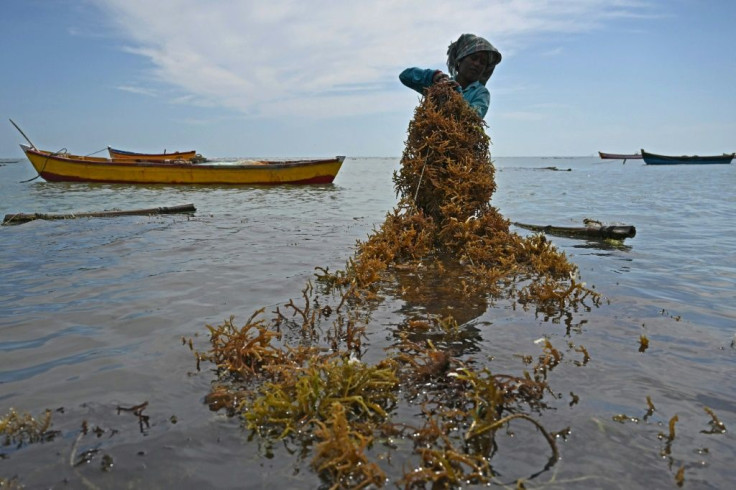What Is Sargassum? Massive Blob Of Smelly Seaweed Headed To Florida
KEY POINTS
- Sargassum is linked to human activities like wastewater that sends pollutants to water bodies
- When it rots, it releases hydrogen sulfide that generates an odor similar to that of rotten eggs
- It can negatively affect water and air quality in the surroundings when it decomposes
A massive blob of smelly seaweed weighing about 6.1 million tons and spanning 5,000 miles is heading toward Florida and the Gulf of Mexico. It is so huge that it can already be seen from space.
The seaweed is called sargassum, which is brown in color and floats on the surface of the sea in large masses, according to the National Oceanic and Atmospheric Administration (NOAA). It is often linked to human activities such as wastewater, lawn fertilizers and agricultural runoff that send pollutants into water bodies, USA Today reported.
Originating from the Atlantic Ocean, the brown bloom is currently posing a threat to beaches across the Caribbean Sea and the Gulf. Scientists at the University of South Florida have been tracking it using satellites with the assistance of NASA.
Once it gets closer to the shore, the thick algae matter can affect marine life. It can pile up on the shoreline and block swimmable waterways along with stopping the light to reach the corals underwater.
It can also negatively affect water and air quality in the surrounding regions as it decomposes. During the process of decomposition, sargassum produces a foul smell. It's because it rots to release a substance called hydrogen sulfide, which creates an odor similar to that of rotten eggs. This odor can pose health concerns for people, including breathing difficulties among those suffering from asthma and irritating eyes, as per Florida Health.
While it may cause health issues among people, the seaweed helps a number of migratory sea creatures such as crabs, turtles and fish by providing them with a habitat, the department said.
"If you've ever been on a beach that had a huge abundance of this, it's not fun," Dave Tomasco, executive director of the Sarasota Bay Estuary Program, told ABC News. "It rots, it uses up the oxygen water and smells like rotten eggs."
The bloom may increase in size by the time it reaches the land, which can still take months. However, where it exactly lands will depend on wind and currents.
Chuanmin Hu, a professor at the University of South Florida, pointed out that the amount of seaweed heading to the coast is not alarming and that sargassum is natural, according to the outlet.
Large quantities of sargassum have been found in the Caribbean almost every year since 2011, as per the University of Florida's Optical Oceanography Lab, which has been monitoring the brown blob.
"Since 2011, large amounts of Sargassum seaweed appeared in the Caribbean Sea every summer except 2013, creating many environmental, ecological and economic problems in many regions," the lab said in a report.
How to Protect Oneself Against Sargassum
Florida Health warns people against consuming sargassum, as it may contain arsenic, cadmium and other heavy metals, CBS News reported. The department also calls on beachgoers to avoid swimming near the seaweed and supervise children at beaches.
Although it is safe to touch the seaweed, experts suggest that people be cautious of sea creatures like stinging jellyfish that can live within it.
The agency further advises people handling the seaweed to wear gloves and maintain safety precautions.
Closing the doors and windows of houses located near the beach can also help limit the travel of harmful hydrogen sulfide indoors.

© Copyright IBTimes 2025. All rights reserved.






















